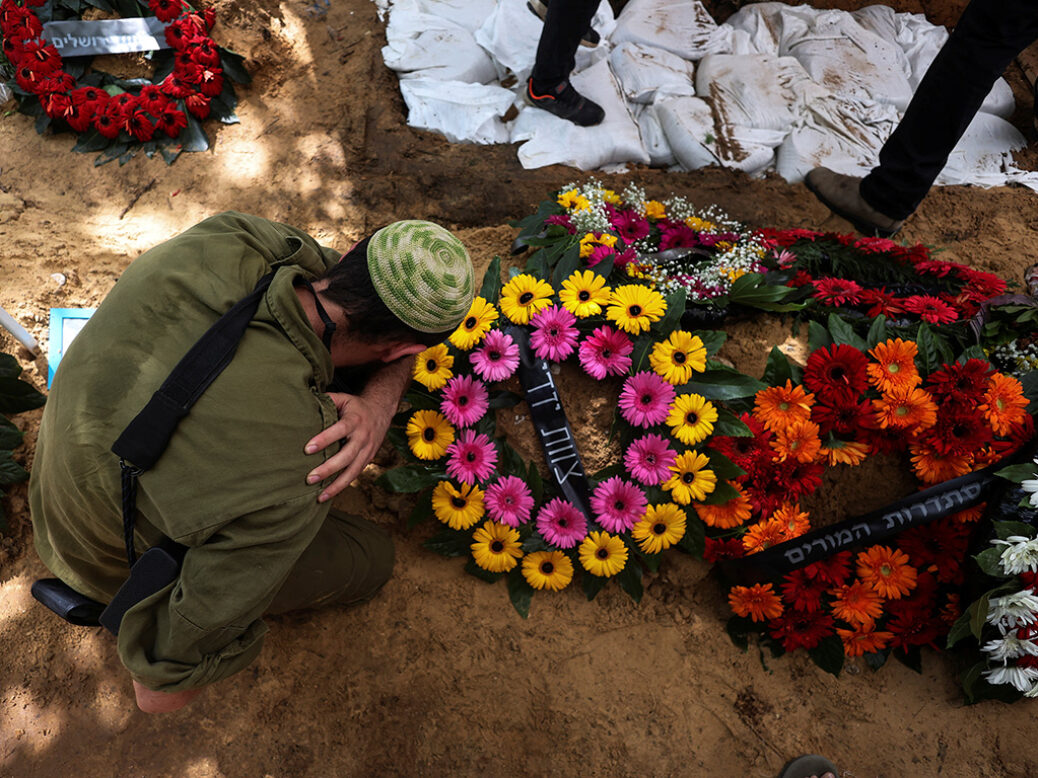
Just after midday on 9 October, two days after Hamas’s attack, I was among the first group of journalists allowed into Kfar Azza, one of the kibbutz communities that suffered the worst massacres. After leaving Kfar Azza, I stopped at the first petrol station I saw and wrote for six hours. I filed my reports to newspapers in Tel Aviv and London. Near midnight, a contact called. It was an Israeli official who sounded unusually perturbed, even for wartime. “What are you doing with the bodies story?”
As more news began to filter through, horrifying details and unverified photographs circulated on social media. I was inundated with phone calls and text messages, all wanting to know about the bodies.
[See also: Israel, Gaza and a war without limit]
The dozens of bodies of Israelis I had seen being carried out of their homes had all been covered in black body-bags. But the details I heard from those who had seen them – among them men who have the harrowing job of recovering human remains and are not prone to exaggeration – left me in no doubt that some of the bodies, adults and children, had been mutilated.
I have seen my share of bodies in 27 years of reporting, both in Israel and the Occupied Territories, as well as in Mumbai following the 2008 terror attack and in Turkey after earthquakes. I have tried to describe the scenes I witnessed without going into detail about the conditions of bodies, believing that it is our responsibility as journalists to convey information to the public while balancing respect for the dead and their families.
It doesn’t change the reality of what happened on the kibbutzim – or what is about to happen in Gaza. Hundreds of families were hunted down and murdered in their homes, parents laying themselves on top of their children in the hope they would take the bullets. They weren’t collateral damage. They were specifically targeted for extinction. And even if their murderers had not hung around to mutilate their bodies, that would be heinous enough.
Every Israeli citizen now feels they were in Kfar Azza. And even before the war in Gaza escalates, they are looking to the Lebanon border, over which Hezbollah militants have been firing missiles, and to the West Bank, where settlers have been shooting Palestinians, and to East Jerusalem, where police have clashed with local residents. Bodies of Israelis and Palestinians are piling up on three fronts. What took place on 7 October cannot be allowed to happen again; no society should have to live with that threat looming over it. If that confirms your view of Israel as a cruel, racist society, Israelis can live with it.
[See also: Misinformation in the Israel-Hamas war is a serious problem]
This article appears in the 18 Oct 2023 issue of the New Statesman, War on Three Fronts






